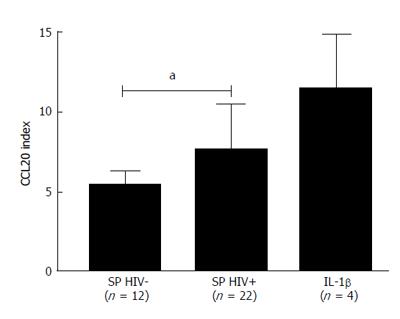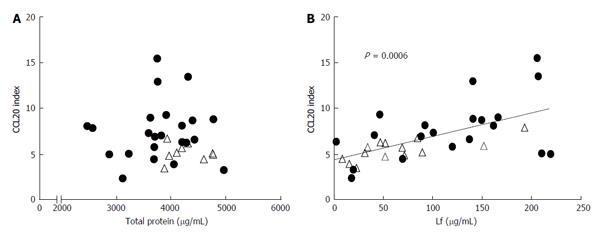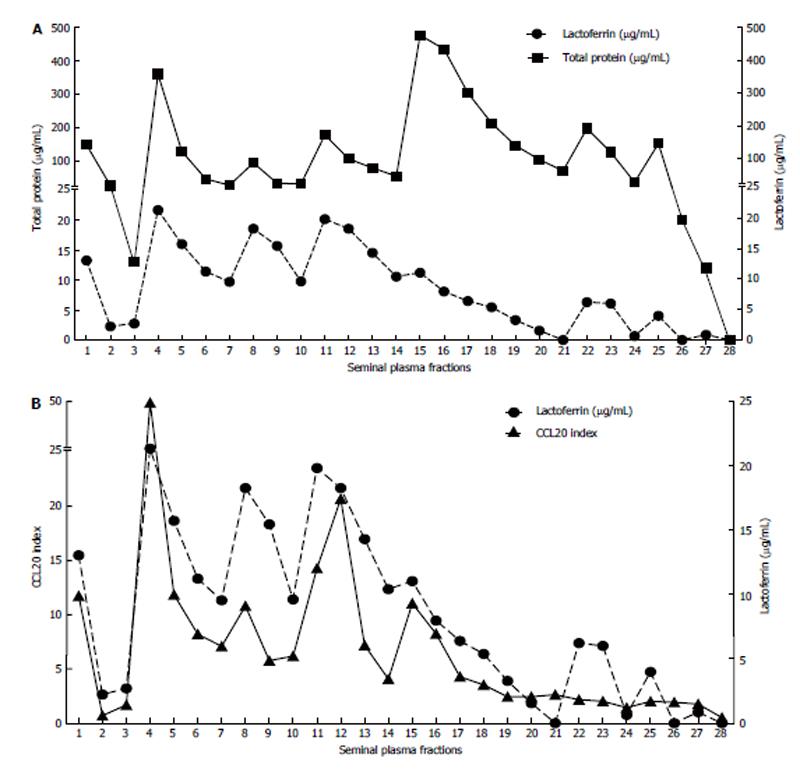Copyright
©2014 Baishideng Publishing Group Inc.
Figure 1 The Chemokine (C-C motif) ligand 20 production by HEC-1A cells exposed to seminal plasma specimens from human immunodeficiency virus-seronegative- or human immunodeficiency virus-seropositive+ subjects as expressed by comparison to untreated cells [Chemokine (C-C motif) ligand 20 index].
Interleukin-1 beta (IL-1β) was used as positive control. aP < 0.05. SP: Seminal plasma; HIV: Human immunodeficiency virus-seronegative.
Figure 2 Correlation between total protein (A) or lactoferrin concentrations (B) and Chemokine (C-C motif) ligand 20 production by HEC-1A cells stimulated with seminal plasma.
Seminal plasma from HIV-negative (open triangles) or HIV-positive subjects (closed circles). Lf: Lactoferrin; HIV: Human immunodeficiency virus-seronegative. CCL20: Chemokine (C-C motif) ligand 20.
Figure 3 Fractionation by ion exchange chromatography of pooled seminal plasma specimens from 12 human immunodeficiency virus-seronegative subjects.
A: Total protein (upper curve) and lactoferrin (lower curve) concentrations, expressed in μg/mL, in each fraction; B: Correlation between the CCL20 index after stimulation of HEC-1A cells by each fraction (closed squares) and its concentration in lactoferrin expressed in μg/mL (closed circles).
Figure 4 The Chemokine (C-C motif) ligand 20 production by HEC-1A cells treated with seminal plasma from human immunodeficiency virus-positive subjects with either detectable viral load > 50 copies/mL or undetectable viral load (< 50 copies/mL).
CCL20: Chemokine (C-C motif) ligand 20; VL: Viral load.
- Citation: Lourenço AG, Komesu MC, Machado AA, Quintana SM, Bourlet T, Pozzetto B, Delézay O. Semen lactoferrin promotes CCL20 production by epithelial cells: Involvement in HIV transmission. World J Virol 2014; 3(2): 11-17
- URL: https://www.wjgnet.com/2220-3249/full/v3/i2/11.htm
- DOI: https://dx.doi.org/10.5501/wjv.v3.i2.11












